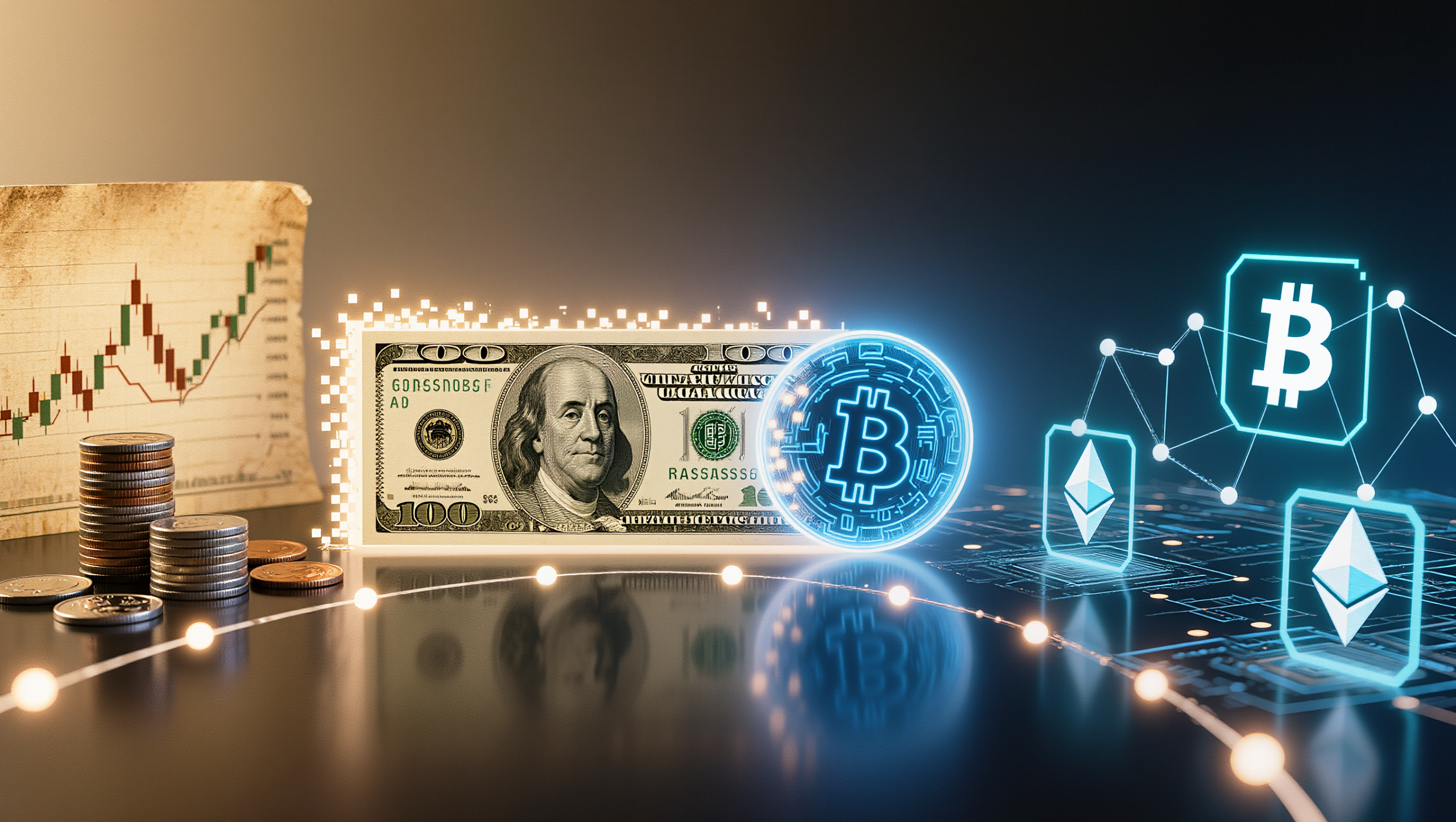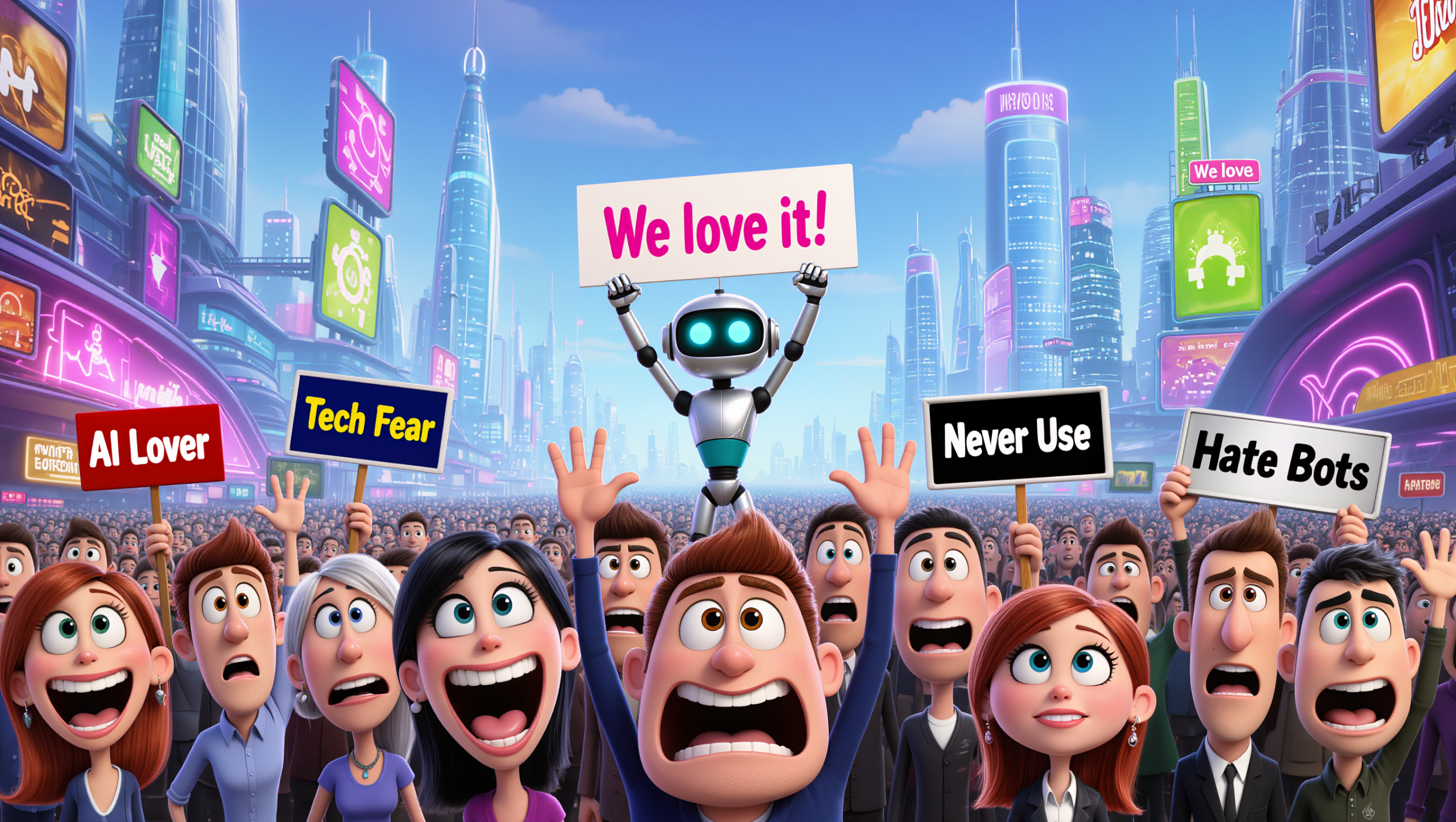You know what makes me chuckle? When someone tells me Bitcoin isn’t backed by anything—usually while holding a dollar bill that’s backed by… well, let me tell you exactly what it’s backed by.
Hi, folks. Walter here, and today we’re going to talk about something that sounds simple but gets to the heart of why people either love or hate cryptocurrency: What is money, anyway?
I’ve heard it a thousand times: “Bitcoin isn’t real money because it’s not backed by anything.” And you know what? That person is absolutely right. Bitcoin isn’t backed by anything tangible. But here’s the uncomfortable truth that might make you reconsider that dollar in your wallet: neither is your dollar.
The Emperor Has No Gold Standard
Let me take you back to a pivotal moment in financial history that most people have forgotten: August 15, 1971. That’s when President Nixon did something that fundamentally changed what money means. He ended the gold standard—the system where your dollars could be exchanged for actual gold.
Before 1971, if you had a dollar bill, it was essentially a receipt for gold sitting in a vault somewhere. The government couldn’t just print unlimited money because each dollar represented a real, physical thing.
After 1971? Your dollar became what economists politely call “fiat currency.” You know what “fiat” means in Latin? “Let it be done.” In other words, money exists because the government says it does. That’s it. That’s the whole backing.
So when someone says Bitcoin isn’t backed by anything, I ask them: What’s backing your dollar? The full faith and credit of the United States government. Which, don’t get me wrong, is substantial—but it’s not gold, silver, oil, or any physical commodity. It’s a promise. Bitcoin is also a promise, just a different kind.
The Real Question: What IS Money?
Look, after watching money change for decades, the pattern is clear: money works not because it is something valuable, but because it does something valuable – it lets us trade. Money isn’t a thing with inherent value. Money is a tool for exchange.
Think about it this way. If civilization collapsed tomorrow (and let’s hope it doesn’t), what would actually be valuable?
Things With Real Value in a Crisis:
- Food – You can eat it
- Water – You need it to survive
- Shelter – Keeps you from freezing
- Clothing – Protects you from the elements
- Tools – Help you produce other valuable things
- Medicine – Keeps you healthy
- Weapons – Provide security
Things With Zero Value in a Crisis:
- Dollar bills – Can’t eat them, can’t wear them (well, you could, but…)
- Bitcoin – Good luck finding electricity to access your digital wallet
- Gold – Pretty, but you can’t eat it either
- Stock certificates – Excellent kindling, I suppose
Neither Bitcoin nor the dollar has what economists call “intrinsic value” You can’t eat a dollar bill. You can’t build a house out of Bitcoin. In a genuine survival scenario, a can of beans is worth infinitely more than a billion dollars in cash or cryptocurrency.
So why does money work at all?
The Magic of Mutual Delusion (Or: How Money Actually Works)
Money works because of something beautifully simple and slightly absurd: mutual agreement.
I’ll accept your dollar for my coffee because I believe someone else will accept that dollar for something I need later. You’ll accept Bitcoin for your product because you believe someone else will accept that Bitcoin in the future. The entire system runs on collective belief.
Let me illustrate with a table showing different forms of exchange and their actual utility:
Value of Exchange Mediums in Different Scenarios
| Medium | Normal Times | Economic Crisis | Apocalypse Scenario | Actual Intrinsic Value |
| Food | ✓ Valuable | ✓✓ Very Valuable | ✓✓✓ Extremely Valuable | HIGH – sustains life |
| Water | ✓ Valuable | ✓✓ Very Valuable | ✓✓✓ Extremely Valuable | HIGH – essential for survival |
| Tools/Weapons | ✓ Valuable | ✓✓ Very Valuable | ✓✓ Very Valuable | MEDIUM – enables production |
| US Dollar | ✓✓ Very Valuable | ✓ Somewhat Valuable | ✗ Worthless | ZERO – paper only |
| Bitcoin | ✓✓ Very Valuable | ✓ Somewhat Valuable | ✗ Worthless | ZERO – digital only |
| Gold | ✓ Valuable | ✓✓ Very Valuable | ✗ Minimal Value | LOW – decorative only |
The point? Money—whether digital or paper—is only valuable in organized societies where people agree it has value. Neither the dollar nor Bitcoin will help you during the apocalypse. But then again, neither will your 401(k) or your real estate deed.
The Real Difference: Supply and Demand
Here’s where things get interesting, and where Bitcoin and the dollar truly diverge.
The Dollar: An Ever-Expanding Supply
Remember how I said fiat currency exists because the government says it does? Well, here’s the uncomfortable part: the government can create as much of it as it wants.
Let me show you what’s happened to the dollar supply over the past 25 years:
US M2 Money Supply Growth (2000-2025)

Source: Federal Reserve Economic Data (FRED)
Think of M2 Money Supply as a giant measuring stick that tracks how many dollars exist in America’s economy – both the cash in your wallet and the money sitting in your bank accounts.
Look at those numbers. In just 25 years, the money supply has increased by 351%. That’s not a typo. The amount of dollars in existence has more than quadrupled.
Now here’s the really eye-opening part: between January 2020 and March 2022 alone, the money supply increased by over 40%. In just over two years, we printed nearly as much money as existed in the previous decade.
What happens when you dramatically increase the supply of something? Economics 101: its value decreases. That’s inflation, plain and simple.
Bitcoin: A Fixed Supply in a Digital Universe
Now let’s talk about Bitcoin’s supply:
Total Bitcoin that will ever exist: 21 million
Bitcoin already mined: 19.9 million (94.8%)
Bitcoin remaining: 1.1 million
Can anyone change this limit? No.
That’s it. That’s the entire supply, forever. No government can decide to create more Bitcoin to pay for a war. No central bank can print more Bitcoin to stimulate the economy. No emergency will ever result in “just a little more” Bitcoin.
The code doesn’t care about your emergencies. The code doesn’t care about politics. The code does exactly what it was programmed to do: release Bitcoin on a predetermined schedule until it hits 21 million, then stop forever.
The “Digital” Money Myth
Here’s another thing I hear constantly: “Bitcoin isn’t real because it’s digital, not physical.“
Well, let me blow your mind with some facts about the dollar:
Physical vs Digital Dollars (2024)
| Type | Amount in Existence | Percentage of Total Money |
| Physical Cash (actual paper and coins) | ~$2.3 trillion | ~11% |
| Digital Money (bank account balances) | ~$19.8 trillion | ~89% |
Sources: Federal Reserve Currency in Circulation, M2 Money Supply
That’s right: approximately 89% of all US dollars exist only as digital entries in bank computer systems. When you check your bank balance online, you’re not looking at paper money sitting in a vault with your name on it. You’re looking at a number in a database.
When you swipe your credit card, no physical money changes hands. When your paycheck gets direct deposited, no armoured truck drives to your bank. It’s all just numbers changing in computers.
So the next time someone tells you Bitcoin isn’t “real money” because it’s digital, remind them that 84% of all payments in America are already digital. The dollar is already mostly digital—Bitcoin just took out the middleman banks.
The Cost of Making Money (Literally)
Want to know something amusing? Here’s what it actually costs to produce the money you use:
Cost to Produce US Currency (2024)
| Denomination | Production Cost | Face Value | Profit to Government |
| $1 bill | 5.4 cents | $1.00 | 94.6 cents |
| $5 bill | 10.9 cents | $5.00 | $4.89 |
| $10 bill | 10.3 cents | $10.00 | $9.90 |
| $20 bill | 10.5 cents | $20.00 | $19.90 |
| $50 bill | 10.5 cents | $50.00 | $49.90 |
| $100 bill | 15.4 cents | $100.00 | $99.85 |
Source: Federal Reserve 2024 Currency Operating Budget
So a $50 bill costs about 10.5 cents to produce. That means the paper, ink, printing, and distribution of a $50 bill costs roughly 0.21% of its face value.
Now ask yourself: What is that piece of paper actually worth?
In terms of raw materials? About 10 cents.
In terms of survival utility? Zero—you can’t eat it, wear it, or build with it.
In terms of exchange value? $50—but only because we all agree it’s worth $50.
Bitcoin works exactly the same way. The production cost (mining) is different, but the fundamental principle is identical: it’s worth something because people agree it’s worth something.
Food vs Money: The Exchange Paradox
Let’s talk about something philosophers and economists have debated for centuries: What makes a good medium of exchange?
Food seems like it should be perfect money, right? Everyone needs it. It has obvious value. You can trade it directly for other things you need.
But food makes terrible money. Here’s why:
Why Food Fails as Money:
1. It spoils – Try saving your salary in bananas and see how that works out
2. It’s bulky – Imagine paying your mortgage in chickens
3. It’s not divisible – Can’t make change with a loaf of bread
4. It varies in quality – Your apples might be worse than my apples
5. Production varies – Droughts and harvests make value unstable
What Makes Good Money:
1. Durable – Lasts over time
2. Portable – Easy to transport
3. Divisible – Can break into smaller units
4. Uniform – One unit equals another
5. Limited supply – Can’t be easily replicated
6. Acceptable – People agree to use it
Now here’s the fascinating thing: both the dollar and Bitcoin meet these criteria—just in different ways.
Comparison: Dollar vs Bitcoin as Money
| Criterion | US Dollar | Bitcoin | Winner |
| Durable | Paper wears out | Digital, forever | Bitcoin |
| Portable | Must carry/transport | Send instantly anywhere | Bitcoin |
| Divisible | Pennies smallest unit | 100 millionth of a Bitcoin | Bitcoin |
| Uniform | All dollars identical | All Bitcoin identical | Tie |
| Limited Supply | ✗ Unlimited printing | ✓ Fixed at 21 million | Bitcoin |
| Acceptable | ✓ Accepted everywhere | ✓ Growing acceptance | Dollar (for now) |
| Government Backing | ✓ US government | ✗ Decentralized | Dollar |
| Seizure Resistant | ✗ Can be frozen | ✓ Self-custody possible | Bitcoin |
The Real Backing: Network Effect and Belief
So if neither Bitcoin nor the dollar is backed by anything tangible, what gives them value?
For the dollar:
- Legal tender laws (must accept for debts)
- Tax obligations (must pay in dollars)
- Military and economic power of the US
- Institutional infrastructure (banks, courts, police)
- Widespread acceptance
- Historical momentum (been using it for decades)
For Bitcoin:
- Mathematics and cryptography
- Decentralized global network
- Proof of work (energy expenditure)
- Fixed supply creating scarcity
- Growing institutional adoption
- Increasing merchant acceptance
- Mathematical verifiability
The dollar is backed by the combined might and promise of the United States government. Bitcoin is backed by mathematics, energy, and an agreement between millions of participants worldwide.
Which is better? That depends entirely on what you trust more: governments or mathematics.
The Inflation Reality Check
Here’s the thing that keeps me up at night: when governments can print unlimited money, they usually do.
It’s not because politicians are evil. It’s because the incentives are structured that way. When there’s an economic crisis, printing money provides immediate relief. When there’s a war to fund, printing money is easier than raising taxes. When voters demand more services, printing money postpones hard decisions.
The consequences—inflation, currency devaluation—happen gradually and are harder to trace back to specific decisions.
Since 2000, the dollar money supply has increased by 351%. Your dollar today buys significantly less than it did 25 years ago, and significantly less than it did just 5 years ago.
Bitcoin, by contrast, cannot be inflated. The supply is what it is, and no amount of political pressure, economic crisis, or popular demand can change that.
The Bottom Line: Money is Belief
Here’s what I want you to understand: money has never been about intrinsic value. It’s always been about belief.
When you held gold coins, you didn’t value them for their industrial uses. You valued them because others would accept them. When you hold dollar bills, you don’t value them for the paper quality. You value them because others will accept them.
Bitcoin continues this tradition. It’s valuable because people believe it’s valuable and are willing to exchange goods, services, and yes, other forms of money for it.
Is Bitcoin better money than the dollar? That’s the wrong question.
The right questions are:
- In what situations does Bitcoin work better than dollars?
- In what situations do dollars work better than Bitcoin?
- What percentage of your wealth should be in which form?
- What are the unique risks and benefits of each?
The dollar has:
- Government backing and legal tender status
- Universal acceptance (for now)
- Stable value relative to Bitcoin
- Established infrastructure everywhere
Bitcoin has:
- Fixed supply (no inflation possible)
- Censorship resistance (no one can freeze your wallet if you control the keys)
- Borderless transfers
- Mathematical certainty rather than political promises
My Take: They’re Both Just Tools
Look, I’m not here to tell you Bitcoin is going to replace the dollar next Tuesday, or that you should put your life savings into cryptocurrency, or that the government is evil for printing money.
What I’m saying is this: when someone tells you Bitcoin isn’t backed by anything, remind them the dollar hasn’t been backed by anything since 1971.
Both are tools for exchanging value. Both work because we agree they work. Neither one will help you much if society collapses—but then again, in that scenario, we’ve got bigger problems than which form of money we preferred.
The difference is that one can be printed infinitely by governments, and one cannot. Whether that makes Bitcoin better depends entirely on what you think governments will do with that printing press.
Personally? I think understanding what money really is—just a tool for exchange that works because we believe in it—helps clarify the entire Bitcoin debate.
Neither the dollar nor Bitcoin has magical inherent value. They’re both just agreements. The question is which agreement you trust more for which purposes.
And that, my friends, is a question only you can answer for yourself.
Because whether it’s paper, digital, or carved on stone tablets, money has always been nothing more—and nothing less—than a shared delusion we’ve all agreed to believe in.
Walter Ledger is the author of “Bitcoin & Beyond: A Guide for People Who Remember When Phones Had Cords” and firmly believes that understanding what money actually is might be the most important financial education anyone can have.







Leave a Reply